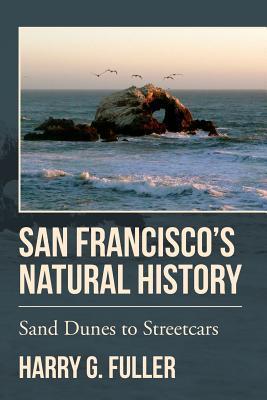This book traces the changes in the environment, the plants and animals starting with the Ohlone through the colonial period and in the decades since the Gold Rush. It describes what the flora and fauna were like before the presidio and mission were founded, what plants and animals disappeared and which survived. There is also discussion of the many introduced species, the landscape changes by humans and the on-going effects of climate change. There is description of introduced and invasive species and how they have affected the ecology in the San Francisco's limited open space. Accounts are summarized from the first natural history observations in San Francisco. These include records that begin with Sir Francis Drake and include the DeAnza, Vancouver, Beechey, Rezanov and LaPerouse expeditions. Book includes map of what San Francisco's landscape and streams was like in 1800 before people began making wholesale changes. EXCERPTS: The want of sufficient level space on which to found so great and growing a city, has been partially rectified, at an enormous expense, by taking building ground from the waters, and by lowering, and in many cases absolutely removing bodily the multitude of sand hills, by which the place is immediately surrounded. What with digging out and filling up, piling, capping and planking, grading and regrading the streets, and shifting, and rebuilding, and again rebuilding the houses, to suit the altered levels, millions upon millions of dollars have been spent. ¬-Frank Soule, et al., The Annals of San Francisco, 1855 *** Nature's plan has evolved through millions of years while man's plans for the earth cover a short span of time and are very often both selfish and short-sighted. -Helen Cruickshank, Thoreau's Birds, 1964 *** In 1792-1793, Archibald Menzies, the medical officer for the British Expedition, headed by Captain George Vancouver, was immediately taken with the dramatic "broad sheet of water" that is the bay, described in the epigraph to this chapter. The observations by Menzies and other expedition crew are valuable as baseline information about how the area was changed over the decades that followed their visit. During their stay in the fall of 1792, the British sailors reported a large number of waterfowl in the marsh that is now Crissy Field. Menzies describes the area between Fort Mason and Fort Point as a "low track of Marshy Land along shore, with some Salt Water Lagoons that were supplied by the overflowings of high Tide










